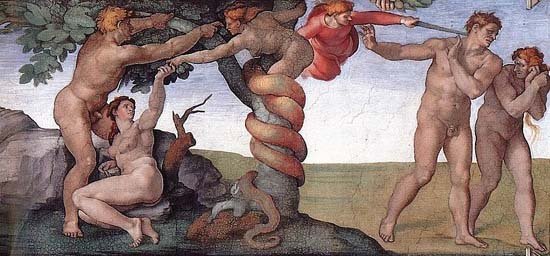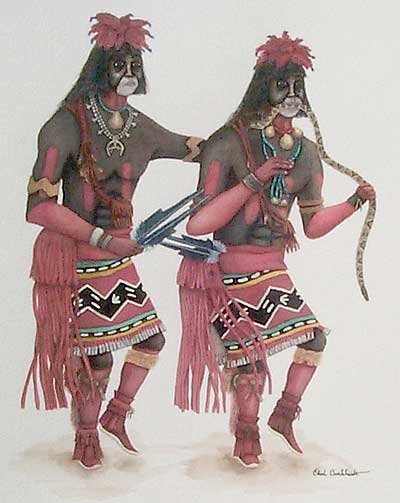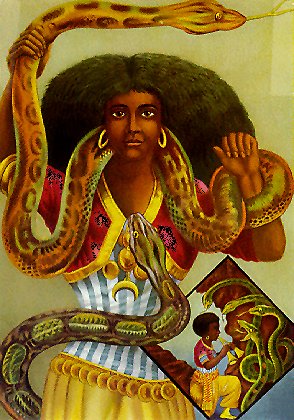The Mystery Of Serpent Worship
Leonard Farra - AncientPages.com - For thousands of years, in many ways, the serpent has played a role in religions, folk customs, and superstitious beliefs.
Why did some people believe in serpent birds and what are the 'fiery flying ones' mentioned in the Bible? (Isa.14.29). And if flying snakes are a mystery what can we make of a North American Native legend which describes a struggle between man and a snake people that resulted in the aliens destroying mankind with a flood?
Is this one of those early supernatural stories which scholars dismiss as myth or could it possibly be that there's something deeper behind it?
The late popular French author Robert Charroux appears to have discovered the answer when he said that: 'Five thousand years ago, the whole world was under the sway of alien gods who came from the sky' ' These gods', he adds, ' are represented everywhere by the same mysterious symbol, the flying serpent ,or dragon. The indications , therefore, are that what might seem to be an odd story was part of a 5,000 year old series of legends which told how civilising gods from the Pleiades taught man agriculture, and useful arts, but later destroyed an evil people with a flood.
The entity who the Ancients knew as man's civiliser was often linked with these stars and he was known under various names. As I have previously explained, legend has it that he had the appearance of a tall, white, bearded, man who wore a long robe, usually white, and that he carried a multi-purpose staff. According to some of the legends, he was involved with a flood or he caused one.
Mexico's Aztecs were late arrivals on the world stage and their civilisation, which flourished in the 13th century, only lasted until 500 years ago when it was destroyed by the Spaniards. Most scholars, who have studied the Spanish chroniclers' reports, fail to appreciate the deeper significance of Aztec religious beliefs.
What they don't realise is that at the heart of the bloodthirsty Aztec religion, in which thousands of people had their hearts torn out and were sacrificed to the gods, there was a version of the 5,000 year old sky-god religion. Initiates, and priests, in that religion, used geometric and animal symbolism to express their beliefs and the animal most commonly used, the snake, was a major feature in Aztec religious symbolism.People in Mexico also kept live ones in their homes.
In Central America, and in some of the northern native cultures, the rattlesnake was sacred and it frequently appeared in religious architecture.
The Cherokee called it 'the head of the serpent tribe' and the Hopi regard it as the elder brother of their Snake Clan.
Hopi Snake clan
Throughout this entire region, and in the entire world, the Pleiades played an important part in religion. Their appearance ended the year in the Aztec calendar and in their 52 year cycle.
The Aztecs called 'The Civiliser of Man' Quetzalcoatl ( Feathered Serpent).
They worshipped him as a god and he played a major role in their religion. Some scholars call him a serpent-god because of his name and because the Aztecs portrayed him looking out from the mouth of a snake.
But what the Aztecs actually explained was that he had the appearance of a white, white-robed, bearded man and that he carried a sceptre.
According to an Aztec prophecy, Quetzalcoatl will return when a comet is seen in the heavens and, by amazing coincidence, one appeared when Cortez, who was mistaken for him, arrived in Mexico with his companions. Why was the god's return associated with a comet? The answer appears to be that he was linked with a serpent and : 'In Mexico, comets were called 'flaming serpents:' Quetzalcoatl's temple, in the Aztec capital, Tenochtitlan's, sacred area was in the form of a cylinder on a pyramid base and its entrance was the open jaws of a serpent. So when the Aztecs celebrated the god's annual return, the priest, or person, representing him emerged, before the congregation of worshippers, from a 'flying, circular object' which had long ago been mistaken for a snake flashing across the sky. In other words, Quetzalcoatl's 'sky/serpent temple' was an Aztec representation of a space craft.
See also:
Mysterious Nagas: Serpent People Who Live In Secret Underground Cities
Ouroboros – Cosmic Serpent And The Self-Devourer – Universal, Powerful Symbol Of Great Antiquity
Kukulkan: Feathered Serpent And Mighty Mayan Snake God
The Incan civilisation, in Peru, was in existence at the same time as the Aztecs and, like the Mexican people, in the North, the Incas also followed a Pleiades linked sky-god religion. The Incas called their civiliser Viracocha and his description is the same as that of Quetzalcoatl because they were the same 'person'. Viracocha appears to have been linked with a serpent because when Pizarro arrived in Peru, with his companions, the Incas thought that the white god had returned and so Atahualpa, the Incan ruler, arranged to meet him in the Serpent Temple at Cassamarca where there was a stone serpent. There were effigies of serpents on many Incan buildings and Viracocha was depicted holding twin serpent staffs.
In the grassy gardens of Cuzco's sacred Coricancha temple, there are carved effigies of a serpent, a condor and a puma. The condor was Viracocha's companion and the puma was of religious significance to the Incas just as was the jaguar in Mexico. The Coricancha carvings may be fairly recently.
'The American Indians believe in a huge serpent sometimes worshipped but amongst the northern tribes mainly subject of myths. In the Chippewa myth he is connected with the flood'. According to another version , a great serpent tried to destroy the human race, with a flood, but help came in the form of Maniboza (Michabo) who was sent to earth teach the Ojibwe agriculture and various arts. Maniboza seems to have been called The 'Great White Hare' because of his brilliant white appearance and he was, apparently, a counterpart of the civilising gods Quetzalcoalt and Viracocha. The horned serpent, which is mentioned in several North American Native legends, was originally a symbol in the Mississippian culture. It was regarded as benign or benevolent and it was also associated with wisdom and healing. There are effigies of it in rock art such as at Pony hills and Cook's Peak. Some of the most intriguing rock art, however, is in the area around Barrier Canyon, in America's South West, where serpents are shown with tall, strange, figures.
There are also serpent mounds in North America such as in Gottenberg in Iowa and the famous 1300 ft one in Ohio which appears to have an egg in its mouth. The Ohio mound is aligned to the summer solstice sunset and the winter solstice sunrise. At the Hopewell site of Fort Ancient, the solstices are marked by two serpents. Were rituals, re-enacting the return of a snake-linked god, celebrated at these, and other North American sacred sites, on those days? In Canada there is the Serpent Mounds Park which received this name because its largest mound zizzags like a snake.
Discs, in early rock art, are suggested to represent the sun but could it be that the sun was an appropriate celestial object for the Ancients to use to represent a craft of the sky-people?
The Incas associated Lake Titicaca with the Creation and, in their legends, Viracocha was first seen after a brilliant sun rose from one of its islands. According to the North American Natchez Indians, their civiliser, who was accompanied by a woman, gave them a set of rules. This being was so bright that the Natchez thought that he came from the Sun. The Natchez chief was named after him and he was called The Great Sun. The Natchez apparently believed that the sun was linked with a snake for nobles were tattooed with suns and serpents. Furthermore, the Great Sun's brother was called Tattooed Serpent and on altar in the Natchez temple there was a rattlesnake carved from wood.
What the Spanish Conquistadors didn't know was that the animal that the Native Americans revered played a major role in Old World 'pagan' religions thousands of years before Christianity and that some of the traditions associated with it were still popular in parts of Europe around the time of the Conquistadors. The Spaniards may have watched Aztec serpent dances and their chroniclers might have been told that Ciucoatl, the Aztec mother goddess, was a snake woman, but it's hardly likely that they would have known that gods and goddesses, throughout the Early World, were associated with a serpent. Sumeria's mother goddess, Ninlil, for example, was known as 'The Snake Lady' and some goddesses were reputed to be half woman half snake. According to legend, Lisbon , the former kingdom of Ofinsu, was ruled by gigantic serpents and its queen was half woman half serpent.
See also:
Aztecs’ Five Suns Creation Myth And Prophecy
Mictlan – Underworld Realm Of The Dead In Ancient Aztec Beliefs
In Glen Feachan, Argyllshire, Scotland, there is a 300 ft serpent mound where unknown people performed religious rituals.(11) At the circular Priory Mount, at Lewes, Sussex, England, a spiral path, in the form of a serpent, winds its way up, and around, the mount with its head resting on the summit. As the mount has a summer solstice alignment, could it be that, on this day, when many religious ceremonies were taking place around the world, a priest, representing a serpent linked god, emerged from the surrounding congregation and made his way up the path and when he reached the serpent's head, on the summit, ceremonies of renewal were celebrated ?
The Celts arrived in Ireland around 2,500 years ago and there were more snake traditions in that country than in any other one in Europe. The Celts had many gods and goddesses but, in Western Celtic religious beliefs, the two most important ones were the sun-god Hu ,whose symbol was a serpent, and his wife Ceridwen-the mother of the world. When he visited Earth, and interacted with humans, Hu taught them how to plough and he also, reputedly, founded Stonehenge.
The Druids were the Celtic priestly caste and the Arch Druid wore a white robe and carried a golden staff. And because of the special importance that his people placed on this animal, the Druid of the Welsh Triads said ' I am a serpent.' The Druids seem to have believed that snakes could fly for the Natural History of Pliny states that when they coil themselves into a ball, in summer, and cast it into the air, the Druids catch it in a cloak without letting it fall to the ground. The Pleiades also played a major role in Celtic tradition and when they appeared, on 1 May and 1 November, they celebrated their two main festivals- Bel' Tainem (now May Day) and Samhain (popularly celebrated as Halloween). Serpent traditions, and customs, had been popular in Europe for thousands of years and, to finally eliminate them, in the 12th and 13th centuries the Church proclaimed that a local saint, such as St Patrick in Ireland, had driven them into the sea.
This would not have been difficult for the Irish to accept as there are no snakes in their country. Ever since that time, in memory of what the saint had achieved, it's become customary for bare-footed Irish pilgrims to climb Croagh Patrick, in County Mayo. However, in spite of all the efforts of the Church, some Europeans hung onto their snake traditions. In Prague, in the 15th century, some people were still offering sacrifices to serpents (16) and others kept live ones in their homes.
'In Lithuania, people believed vipers and serpents to be gods and worshipped them with great veneration' and in the 16 th century, in Northern Sweden, there were people who revered household serpents as gods. Excavations at Knosses, in Crete,in 1903, uncovered figurines of a serpent goddess holding a snake in each hand and serpent dances remained popular in Greece, and other parts of Europe. They still are in Helston, Cornwall, England, in the form of the Furry Dance.
The incredible multi-purpose staff of the star-people was alluded to in numerous legends which told how a god, or goddess, struck a rock with one and caused water to flow. It was also associated with healing and as early man's 'visitors' were linked with a snake, a snake encircled staff was associated with Asclepios, the long-robed, bearded, Greek god of medicine .People went for healing to his splendid Epidaurus Temple where live serpents were kept in a circular enclosure. Asclepios' symbol was adopted by the medical profession.
The Etruscans ,who preceded the Romans in Italy, were an advanced race of master builders, of unknown origin, and most of what's known about them comes from their tombs. The Etruscans were obsessed with serpents. There are numerous effigies of them in their religious art and especially relating to their gods. There were also serpent cults in Ancient Rome.
The emperor, Augustus, who founded the Roman Empire, was reputedly born of one and for their protection, the Pompeians relied on the Serpent of the Hearth. White has long been associated with purity. White animals were sacred in parts of the Early World and some people placed special importance on the white snake. 'Among Scottish highlanders it was venerated as the king of the serpents' and 'according to both Gaelic and German folklore, when boiled it conferred medical wisdom'. In Japan, the white snake was a messenger of the gods (21) and in China, Lady White Snake is a popular legend.
African serpent traditions date back to the mists of time. In early days, the snake was revered throughout the continent 'either in itself or as the embodiment of a god'. and these traditions appear to have arisen spontaneously.
Serpent worship in Africa.
The python, the grandfather of all snakes, featured in many African stories and some tribes celebrated with serpent dances. In Dahomey, a hundred and fifty years ago, sacred snakes were kept in a 'circular, whitewashed hut' and a person who dared kill one was put to death. A python represented the Baganda god Selwanga , who had his own priests, and huge open-jawed bronze pythons were depicted winding their way down pillars on the palace towers in the former powerful West African Kingdom of Benin.
This type of symbolism,which was also used by the Aztecs and Maya, suggests that the serpents came from somewhere above. The serpent was also revered by the West African Ashanti but the most incredible snake traditions, in the whole of Africa, are those of the Dogon, in Mali, which are linked with Lebe- their civiliser. Lebe, the oldest man in the world, had the appearance of a bearded man and he carried a long straight staff. Lebe is associated with 'one' of a group of several serpents and, like his Aztec counterpart, Quetzalcoatl, on the other side of the Atlantic, he was reborn from its mouth. According to a Dogon tradition, when the Great Nommo, or probably his Ark, was descending it resembled a flame but when it touched down on Earth, its colour changed from red to white.
Is this a description of a white space craft emerging from its mother-ship and is it connected with the Dogon's sacred civiliser/serpent and the Pleiades which feature in their traditions? Wherever the Dogon originally came from, their mystical serpent traditions appear to be related to Sumeria's Annunaki.(28) Five thousand years ago, in Sumeria, Enlil, the Annunaki leader, was called a serpent and Ea/Enki/ the Sumerian civiliser, who appears to have been shown holding a 'flaming disc', was associated with a snake and the Flood. The serpent featured in numerous early Middle Eastern legends, and traditions, and 'Traces of sun and serpent worship remained in Syria, and other parts of Western Asia, down to and even after the introduction of Christianity.'
Another Early World civiliser, Egypt's Osiris, whose origin was reputedly in the Pleiades, was later made the Egyptian God of the Dead. In the late New Kingdom, he was shown seated on a throne on the back of a huge snake whose body is draped over a stepped-pyramid and its head is held high. The pyramid represented the World Mountain, or First Land, that rose from the surrounding water at the time of the Creation.
This form of symbolism was built into many other early pyramids including those of the Babylonians, Assyrians, in Tiahuanaco in Bolivia, and in Teotihuacan Mexico. The World Mountain is also represented by the moat surrounded Angkor Wat, in Cambodia, which was built in the early years of the 12th century and whose entrance is guarded by legendary multiple serpents .The latter appeared in legends in Asia, in the Ancient Middle East , among the Basques, in Egypt, among the Dogon and the Maya. Serpent worship was common in Southern Asia for thousands of years and the cobra was widely used as a religious symbol. Effigies of it were depicted on temples and traditional serpent dances are still popular in parts of India. There were also snake traditions in China which has the Year of the Snake.
The cobra was also special in Egypt. It was a symbol of divinity, and a protector, but the serpent was also a terrifying creature which deceased Egyptians encountered on their journey through the bleak Underworld.
Isis as Agathe Tyche and Osiris as Agathos Daimon in serpent form. Isis as Agathe Tyche and Osiris as Agathos Daimon, both in serpent form.
The Egyptians also had traditions of the Primal Serpent which swam in the Primeval Sea and : 'Maspero says that the representation of the hooded serpent, attached to the front of the king's headdress, was not only regarded as the badge of royalty but also a protector and credited with the power to destroy.'
A disc, or sphere, balanced on the head of a cobra had similar powers and this symbol was depicted on the hems of royal garments . Its thought that a sacred serpent was kept in Egyptian temples and in the Egyptian Papyrus Ani, a fire-breathing one, Khati, was said to attack the enemies of Osiris.
See also:
Vedic God Indra: Ruler Of Heavens And Tough Warrior Who Kills Evil Serpent Vritra
Jormungand – Hideous Poison-Spewing Midgard Serpent Was One Of Loki’s Children
According to a New Guinea legend , the king of the serpents rescued some of the survivors of The Flood and in Australia, the Aboriginal Warrumunga claim that their ancestor was a huge serpent which, when there was much evil in the world, caused destruction and killed many people. The snake appears in Aboriginal traditions in the form of the Rainbow Serpent and there are many drawings of it on rocks and in caves.
The Rainbow Serpent is associated with an elderly bearded man, who carried a sacred staff, and who visited the Aborigines from the sky-world. Eastern Australian Aborigines call him Baimi and his return to Earth was celebrated in huge earth circles the plan of which is remarkably similar to that of the earliest phase of Stonehenge in England. The highly regarded adventurer/scholar, Thor Heyerdal demonstrated that early people could have made long sea voyages and that there were contacts between different cultures.
What we have found, in support of his theory, is that the snake was revered throughout the Early World in cultures that are thousands of miles apart and which, we are led to believe, had no contact with each other.
The snake was associated with a disc, the Sun, the Flood, and the Creation, and people everywhere celebrated with serpent dances. The early folk also associated this animal with their gods, and goddesses, but more significantly, with a bearded male civiliser who carried a staff and who was linked with the Pleiades. There were numerous versions of the serpent linked sky-god religion in the Early World. Most of them were suppressed by the Church and only a few survive.
First version of this article was originally published on MessageToEagle on August 23, 2014
Written by Leonard Farra - AncientPages.com
About the author: Leonard Farra - is the author of the books The Pleiades Legacy and The Pleiades Legacy (The Stone Age) - The Return of the Gods and The Pleiades Legacy ( The New World). All his books can be purchased Online from Blurb.Com. His E-books can be viewed on Apple Ipad, Iphone and Ipad touch. Leonard Farra has researched the Ancient Astronaut theory for 40 years and written four books on the subject.
Copyright © AncientPages.com All rights reserved. This material may not be published, broadcast, rewritten or redistributed in whole or part without the express written permission of AncientPages.com
More From Ancient Pages
-
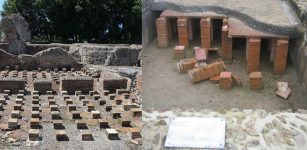 Hypocaust – First Central Heating Invented By Ancient Romans 2,000 Years Ago
Ancient History Facts | Jan 14, 2018
Hypocaust – First Central Heating Invented By Ancient Romans 2,000 Years Ago
Ancient History Facts | Jan 14, 2018 -
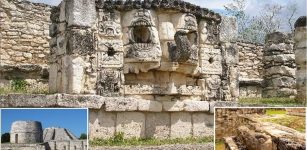 Rise Of League Of Mayapán And The Last Great Maya Capital
Featured Stories | Aug 23, 2017
Rise Of League Of Mayapán And The Last Great Maya Capital
Featured Stories | Aug 23, 2017 -
 Ancient Roman Wine Was Spicy And Smelled Like Toast – Dolia Vessels Reveal
Archaeology | Jan 25, 2024
Ancient Roman Wine Was Spicy And Smelled Like Toast – Dolia Vessels Reveal
Archaeology | Jan 25, 2024 -
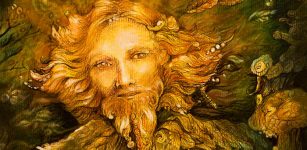 Never-Ending Battle Of The Oak King and Holly King – Confrontation Of The Light And The Darkness
Celtic Mythology | Dec 17, 2021
Never-Ending Battle Of The Oak King and Holly King – Confrontation Of The Light And The Darkness
Celtic Mythology | Dec 17, 2021 -
 10 Remarkable Jain Temples – Marvelous Ancient Architecture And Stone Carvings
Featured Stories | Dec 17, 2015
10 Remarkable Jain Temples – Marvelous Ancient Architecture And Stone Carvings
Featured Stories | Dec 17, 2015 -
 Cueva de Ardales – Rock Art Cave In Spain Was Used By Ancient Humans For More Than 50,000 Years
Archaeology | Jun 1, 2022
Cueva de Ardales – Rock Art Cave In Spain Was Used By Ancient Humans For More Than 50,000 Years
Archaeology | Jun 1, 2022 -
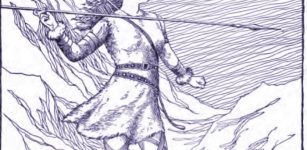 Skadi: Goddess Of Destruction, Giantess And Patron Of Winter Hunters And Skiers In Norse Mythology
Featured Stories | Dec 14, 2017
Skadi: Goddess Of Destruction, Giantess And Patron Of Winter Hunters And Skiers In Norse Mythology
Featured Stories | Dec 14, 2017 -
 Scientists Found Mysterious Prophecies In Ancient Egyptian Pyramid – Are They Linked To The Strange Visions Some Experience Inside?
Featured Stories | Dec 17, 2024
Scientists Found Mysterious Prophecies In Ancient Egyptian Pyramid – Are They Linked To The Strange Visions Some Experience Inside?
Featured Stories | Dec 17, 2024 -
 Ancient Scandinavians Never Spoke Of Themselves As Vikings – Here Is Why
Ancient History Facts | Mar 15, 2021
Ancient Scandinavians Never Spoke Of Themselves As Vikings – Here Is Why
Ancient History Facts | Mar 15, 2021 -
 A Baffling 100-Year-Old ‘Alien’ Puzzle – Shocking Cosmic Secrets
Featured Stories | Sep 20, 2018
A Baffling 100-Year-Old ‘Alien’ Puzzle – Shocking Cosmic Secrets
Featured Stories | Sep 20, 2018 -
 Unique Page From Rare Illuminated Manuscript And Thousands Of Treasures Found Under The Floor Of Oxburgh Hall
Archaeology | Aug 18, 2020
Unique Page From Rare Illuminated Manuscript And Thousands Of Treasures Found Under The Floor Of Oxburgh Hall
Archaeology | Aug 18, 2020 -
 Did The Babylonian Fish-God Oannes Visit Tiahuanacu?
Ancient Mysteries | May 12, 2014
Did The Babylonian Fish-God Oannes Visit Tiahuanacu?
Ancient Mysteries | May 12, 2014 -
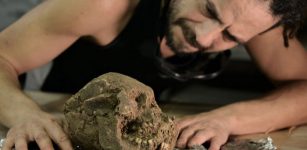 Lady SAS – Ancient Skeleton Of Foreign Woman Found In Palenque – Who Was She?
Archaeology | Apr 11, 2023
Lady SAS – Ancient Skeleton Of Foreign Woman Found In Palenque – Who Was She?
Archaeology | Apr 11, 2023 -
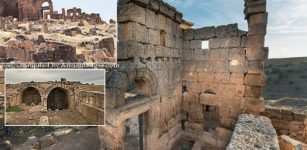 1,800-Year-Old Entrance To Turkey’s Zerzevan Castle Found Among The Ruins
Archaeology | Aug 15, 2020
1,800-Year-Old Entrance To Turkey’s Zerzevan Castle Found Among The Ruins
Archaeology | Aug 15, 2020 -
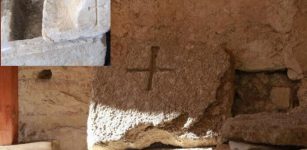 ‘Holystone’ – Stone Chest With Jesus Christ’s Cross Found At Balatlar Church In Turkey’s Sinop
Archaeology | Mar 4, 2020
‘Holystone’ – Stone Chest With Jesus Christ’s Cross Found At Balatlar Church In Turkey’s Sinop
Archaeology | Mar 4, 2020 -
 Mysterious Disappearance Of Explorer Peng Jiamu In Lop Nur – The Wandering Lake
Featured Stories | Dec 20, 2018
Mysterious Disappearance Of Explorer Peng Jiamu In Lop Nur – The Wandering Lake
Featured Stories | Dec 20, 2018 -
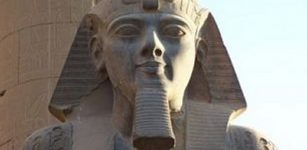 On This Day In History: Ramesses II Became Pharaoh Of Ancient Egypt – On May 31, 1279 BC
News | May 31, 2016
On This Day In History: Ramesses II Became Pharaoh Of Ancient Egypt – On May 31, 1279 BC
News | May 31, 2016 -
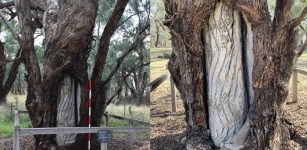 Hidden Story Of The Sacred Wiradjuri Carved Trees Revealed
Archaeology | Nov 28, 2023
Hidden Story Of The Sacred Wiradjuri Carved Trees Revealed
Archaeology | Nov 28, 2023 -
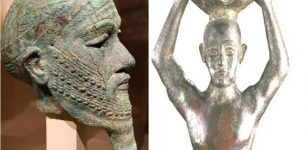 King Ur-Nammu – King Of Ur, King Of Sumer And Akkad – The One Who Built The Temple Of God Enlil
Ancient History Facts | Aug 30, 2015
King Ur-Nammu – King Of Ur, King Of Sumer And Akkad – The One Who Built The Temple Of God Enlil
Ancient History Facts | Aug 30, 2015 -
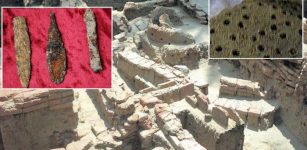 Keeladi, India: Ancient Residents Along Vaigai River Had Adopted Highly Progressive Technologies
Archaeology | Aug 28, 2020
Keeladi, India: Ancient Residents Along Vaigai River Had Adopted Highly Progressive Technologies
Archaeology | Aug 28, 2020

